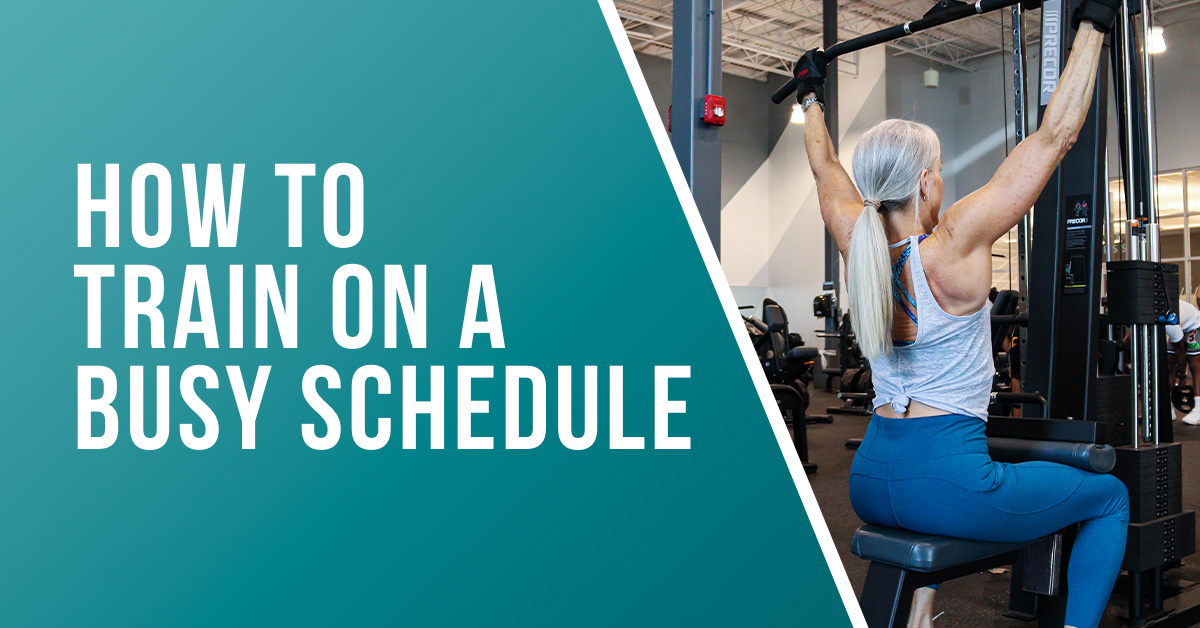When it comes to utilizing training and healthy eating to enhance the quality of life, "I don't have time" is the most common excuse people tell themselves.
More often than not, even if you suggest that the benefits of investing in an optimized training and nutrition plan can outweigh the time invested when you do it yourself, people continue to explain how busy they are.
If you're over making excuses and ready to take the next step towards a healthier and happier tomorrow, keep reading!
In this article, we will give you actionable tips on how you can integrate healthy lifestyle choices into a busy schedule.
Why Should You Do This?
Quite frankly, your success in every aspect of life is primarily based on your physical and mental well-being.
Our modern-day lifestyle can quickly rob us of quality daily movement while giving us easier access to lower quality and less nutritious food options that may impact our quality of life.
In a sense, being fit and even muscular was something completely natural for us at one time. With industrialization bringing convenience into our lives, we have veered off from this natural healthy living pattern, which makes fitness and nutrition "someday goals" for most people.
Your body is a community of cells that you technically govern and nurture with the things you put into your body and how you use it. As the leader of your community, it's your job to keep your community healthy!
Now, let's talk about training and possible ways to integrate it into a busy schedule (yes, even if you work 12-hour shifts.)
How to Train Efficiently
For most people, it feels like forever to get to the gym, do your warm-up, do the workout, get back home, shower, and eat. All of this can be time-consuming so your best bet is to optimize the whole process as much as you can!
Here are some tips that you can use to start saving time right away:
- Find a local gym that is 10 - 15 minutes away from your home or workplace.
- Set up an area in your home with basic equipment and exercise there instead of the gym on days where your schedule is packed.
- Train 20 - 30 minutes every day rather than 3 hours at once 2 or 3 times a week.
- Do short, intense workouts to save on time and still reap the benefits of regular training.
If you are a busy individual, there are ways to get around your schedule and fit a couple of training sessions into your weekly schedule. (After all, this is for your greater good, and it pays off big time!)
One question still stands though - What is the best time to workout?
Some people have a schedule that allows them to train during different parts of the day, so let's look at each one and analyze them to figure out which time would be best for you!
Training in the morning
Upon waking up, your body is, in a sense, fasted, meaning that your glycogen levels are lower than usual, which may make your strength training performance suboptimal. But, training in the morning is a good way to kickstart your day!
Early morning exercise will help you start the day with more energy, focus, and optimism - plus after a morning workout, you are more likely to eat healthily and stay active throughout the rest of the day!
Even if you can only spend 30 - 40 minutes for a workout upon waking up, there is nothing wrong with that.
Training in the afternoon
Maybe you need a little more time to wake up and happily start your day. Then you should soak up the extra rest and the sunlight.
Sunlight signals our pineal gland to secrete serotonin, a daytime neurotransmitter. In other words, serotonin will help you feel more awake, alert, and gives you more energy to put you in the mood for your daily activities.
Humans are supposed to be fine-tuned to the sun and Earth's cycle. There are natural periods where our cardiovascular efficiency, muscular strength, and nervous system are the most active. This is generally in the afternoon between 3:00 PM and 5:00 PM.
So, if your schedule allows you to train in the afternoon, this is your body's optimal choice. Not only will you sync your workout with your biological activity time window, but you'll also have food in your system to provide more energy to fuel your workout than you would if you workout early in the morning.
Training in the evening
Just like the previous two, the evening has its advantages and disadvantages.
For instance, workouts can be a great stress reliever after an entire workday! On top of that, nighttime is the recovery time for the body. So after an intense workout, you are priming all the recovery mechanisms of your body, and it becomes easier for you to fall asleep.
However, if you do your workout too soon before bed, it could disrupt your sleep cycle - to avoid this, we recommend training 3-4 hours before bedtime!
Conclusion
Training and eating well should not be a goal you want to achieve, but they should be tools that you use to optimize your performance in all aspects of life and your overall quality of life!
Your health should be your #1 priority. It's important to consider optimizing your training process so that the benefits can outweigh the time you are investing. The best practice is by finding a nearby gym, doing shorter workouts more frequently, and utilizing any equipment you have at home for the days that you genuinely don't have time to stop somewhere else.
Take some time to find "time gaps" in your life and replace those with more productive activities like training or coaching. For instance, most people spend at least an hour or two a day scrolling on their Instagram feed. That's time you can easily use to get a workout in or prepare healthy lunches for the next few days.
Ultimately, proper and regular training sessions will noticeably optimize your fitness levels and mood and make you feel better - These results you can apply to other aspects of your life too!









.jpeg)
.jpg)
.jpg)